Why Water Matters: Chatting with Third Wave Water
There are a lot of variables that go into creating the “perfect” cup of coffee. From the beans, to the grind setting, to the method you use to brew. Charles Nick and Taylor Minor took things even further by honing in on the quality and consistency of the water used when making coffee and espresso. Inspired by their shared love of science and innovation, the pair created Third Wave Water, a mineral coffee concentrate, that when mixed with distilled or reverse-osmosis water, creates the perfect balance for brewing consistently delicious coffee. We chatted with Nick about how TWW was born (hint: Thai food was involved), how the system works, and the upcoming release of their new project; Tethys.

How did you two meet, and from there, how did you combine forces to create Third Wave Water?
We met when I was looking for more local roasters to add to The Wright Cup, my coffee subscription company. Taylor owned a local roaster coffee shop called Telemetry Coffee that we added to our Dayton box. We are both inquisitive people and fans of sci-fi and science in general so we would hang out discussing our favorite nerd topics.

As two coffee shop owners, when did you come to realize that the water you were using was not up to par with the standards for the Specialty Coffee Association?
Taylor created a custom water system for his coffee shop in 2016 to bring his cafe up to the SCA standard. Later that year we were having lunch at a local Thai restaurant when I asked Taylor if he could make a concentrate of his perfected water blend used at his coffee shop to use for my coffee customers at The Wright Cup. Taylor joked that he could dehydrate the water and then thought to himself, “Wait, I can do that.” Since he had just finished building his laboratory, he could easily create the initial water formula.

Can you explain to us, in layman’s terms, what Third Wave Water contains and how it works?
Third Wave Water packets contain three core minerals for each of the two water profiles: an espresso profile and a ‘classic’ profile. The Espresso Profile contains Magnesium, Calcium and Potassium Bicarbonate while the Classic Profile contains Magnesium, Calcium and a touch of Sodium. Use the Espresso Profile to protect your espresso machine and get the perfect shot of coffee while using the Classic Profile to brew everything else: drip, pour overs, French Press, etc. Simply add a packet of the minerals to 1-gallon of distilled water, shake and then add this mineralized water into your favorite brewing device.

How have you noticed that using Third Wave Water changes the taste of the coffee and espresso you brew?
Definitely! Ever since the first experimental vial of Third Wave Water compared to the best water I could find, it was an immediate shift to brighter, less bitter coffee with a more velvety mouthfeel. The amount and type of minerals can change brew times as well, so be sure to adjust pour over recipes when shifting to Third Wave Water.

Can you tell us more about Tethys and how this water system works? Do you have any plans to expand on this further and create more products specifically for cafes?
Ever since the creation of Third Wave Water we had the goal of creating the perfect water system for cafes. The first version of Tethys does one thing perfectly: create SCA approved water consistently. It contains a robust custom reverse osmosis system which is then automatically remineralized using patent pending technology. We designed Tethys in a beautifully wrapped enclosure utilizing a touchscreen interface and online monitoring to make the cafe owners life easy; the system plans your maintenance and servicing automatically. Our first market is definitely the US, but patents have been filed internationally in preparation to expand to the worldwide market over the next few years. Our goal is to help specialty cafes easily fix the ever-changing water problem with a plug-and-play solution.

On an ideal day, what do your morning coffee routines look like?
We are fairly busy these recent months, so our typical day begins by measuring fresh coffee beans on the Hario scale, dropping them in the Baratza Vario then letting our Ratio Eight do the heavy lifting of brewing the coffee while checking emails. When I want to take an extended break I will mix things up brewing on V60 or Chemex using a Melodrip for even water dispersion, and a Kruve sifter for exact grind separation. Sometimes, when brewing on the Ratio Eight, I will sift the grinds with the Kruve and add the fines back to the brewing coffee in the last one minute of the brew cycle to add a touch brighter taste…borrowed from one of Dylan Siemens’ coffee recipes.

What would you describe as “good, better, and best” approaches for the home barista looking to improve their water game?
This is where the challenge began, to find the best water in the midst of today’s options. The typical ‘good’ option is filtered water using something like a Brita, or other carbon filter removing the chemicals from the water. This method removes many unwanted flavors, but leaves the same amount of minerals in your water, which can greatly affect the alkalinity, and flatten a bright, light roast coffee. Next, on the list for the ‘better’ water option is spring water, but it is always a gamble. Spring waters and even bottled waters are regulated by the FDA to be safe, but their mineral content is not monitored leaving the water to stray from any defined labeling. Most spring waters do not define mineral content.
On a side note, purified water, which is water processed through distillation, reverse osmosis is not recommended to brew coffee by itself. Coffee requires the right amount and type of minerals present to effectively saturate with the coffee oils and provide the coffee drinker the ability to perceive the flavors in the cup, which brings us to the recommended ‘best’ method. By adding Third Wave Water to purified water like distilled or RO water, your coffee has the best chance of providing some of the best flavors present in the coffee bean. The oils can effectively saturate with the water while the presence of Magnesium, Calcium Citrate and Sodium provide a healthy perception of the coffee on your tongue. The mineral blend provides the easiest method for creating the recommended SCA water profile anywhere you can acquire purified water.

How do you use Third Wave Water when brewing with the Ratio Eight?
We are spoiled and use a Tethys water system to fill our Ratio Eight in our main office, but in our other offices we fill five gallon jugs with Third Wave Water coupled with a hand pump on top. This is similar to the methods we use when brewing coffee at events: fill the glass carafe with water from the five gallon jug by pressing the hand pump then pour the water into the water reservoir on our Ratio Eight.
Web: Third Wave Water
Instagram: thirdwavewater
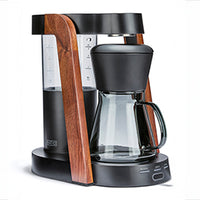 Ratio Eight S2
Ratio Eight S2
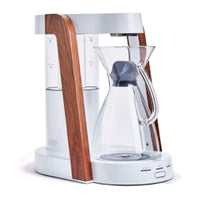 Ratio Eight Original
Ratio Eight Original
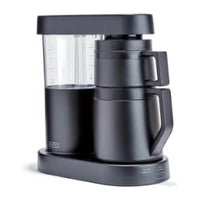 Ratio Six
Ratio Six
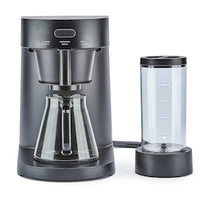 Ratio Four
Ratio Four
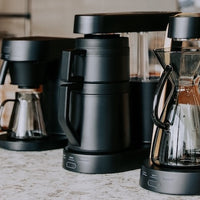 Compare Machines
Compare Machines






